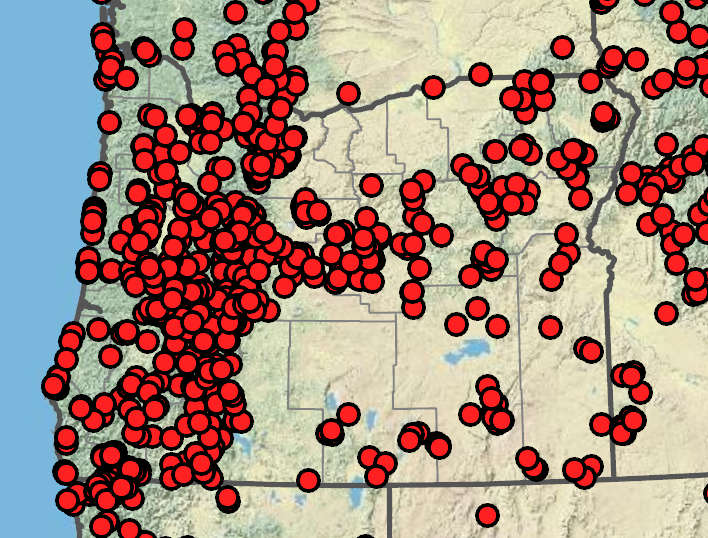Juncus ensifolius
dagger-leaved rush, swordleaf rush
flat; iris-like, blue-green, partially septate;
auricles usually absent (0.1–0.4 mm).
1–12(22) clusters; clusters often head-like, 3–70-flowered.
tepals 6, brown to often dark brown or black;
stamens 3;
filaments 0.6–1.1 mm;
anthers 0.4–0.7 mm;
styles 0.2–0.8(1) mm.
longer than or equaling tepals, dark brown to blackish;
apices obtuse or acute and abruptly tapered to short beak, 1-chambered.
0.4–0.5(0.6) × 0.15–0.2 mm, apiculate, reticulate.
Juncus ensifolius
Shores, swales, springs, wet meadows, wet prairie, damp dunes, peatlands, ditches. 0–2500m. Throughout Oregon. CA, ID, NV, WA; north to Alaska, east to Saskatchewan, SD and CO, south to AZ and Mexico; Ontario and Quebec south to WI and NY; HI; northeastern Asia, Europe, New Zealand. Native.
With three stamens, this species is reliably separated from J. saximontanus, which has six stamens. Rare plants with variable stamen numbers in an inflorescence may represent hybrids and need investigation.
Peter Zika
- Local floras:
BC,
CA,
OR,
WA
- Local Web sites:
CalFlora,
CalPhotos,
Flora NW,
PNW Herbaria
WildflowerSearch
iNaturalist (observations)
USDA Plants Database
- LBJ Wildflower Center
- SEINet
- Plants of the World Online
- Encyclopedia of Life
- Wikipedia
- Google Image Search

